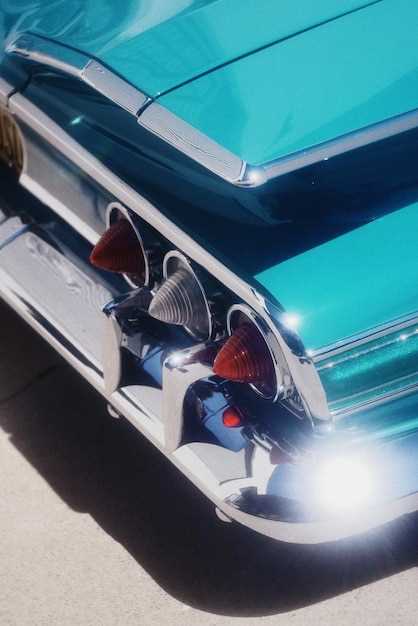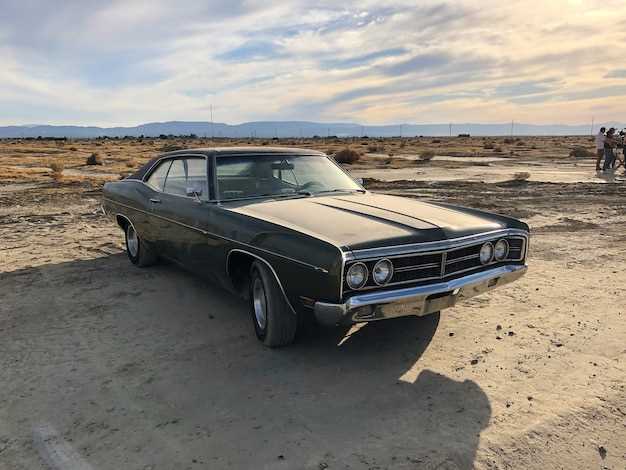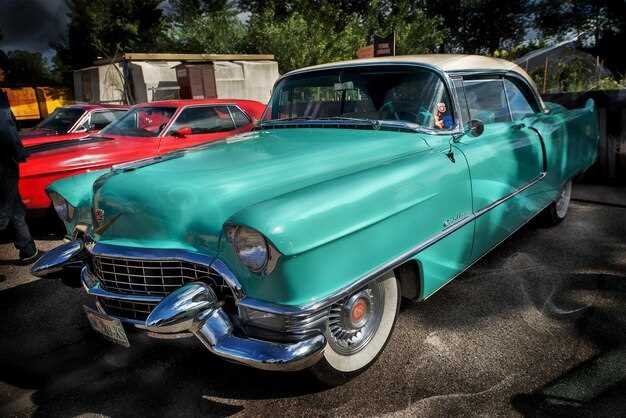
The 1960s marked a transformative era in the history of American automotive design and engineering. During this decade, the country witnessed a remarkable evolution in cars that not only redefined performance but also embraced innovative styling and advanced technology. The 60s were characterized by a spirit of creativity and rebellion, which was profoundly reflected in the vehicles produced during this period. As America embraced cultural shifts, its automotive industry responded with models that pushed the boundaries of what was possible, setting the stage for lasting legacies.
In the 60s, the American car market flourished with iconic designs and powerful engines, capturing the imaginations of drivers across the nation. Manufacturers like Ford, Chevrolet, and Chrysler introduced ground-breaking models that combined performance with aesthetic appeal. From the sleek lines of the Mustang to the bold presence of the Camaro, cars of this era became symbols of freedom and self-expression, embodying the ethos of an entire generation.
This decade also proved pivotal in terms of technological advancement, as automakers experimented with new materials, fuel efficiency, and safety features. The quest for horsepower led to the rise of muscle cars, changing the performance landscape forever. This fervor for innovation not only shaped the vehicles themselves but also influenced the culture surrounding them, creating a vibrant community of enthusiasts dedicated to the art of automotive excellence.
The Influence of Design Innovations on 60s Cars

The 1960s marked a pivotal era in the American automotive landscape, where design innovations significantly influenced the aesthetics and functionality of cars. This decade saw manufacturers embracing bold styles and engineering advancements, defining what we now consider classic cars. Smooth curves and streamlined shapes replaced the boxy designs of the previous decades, leading to vehicles that not only looked more appealing but also enhanced aerodynamics.
A key innovation was the introduction of spacious interiors and improved ergonomics. Automakers focused on driver comfort and passenger experience, integrating features such as cushioned seating and advanced dashboard layouts. This focus on user-friendly design appealed to families and young drivers alike, solidifying the bond between car culture and American lifestyle.
The use of vibrant colors and unique trims differentiated models on dealer lots. Manufacturers began to experiment with paint technology, resulting in dazzling shades and metallic finishes that made classic 60s cars stand out. Iconic models like the Ford Mustang and Chevrolet Camaro showcased these design elements, becoming symbols of freedom and rebellion during a transformative cultural era.
Headlight designs during this time also underwent significant changes. The shift to modern, more stylized headlight configurations added personality to vehicles, allowing manufacturers to create signature looks that are still recognizable today. Innovations in safety and visibility, such as the introduction of safety glass and improved lighting systems, further enhanced the functionality of these classic cars.
Overall, the design innovations of the 1960s not only transformed cars into eye-catching masterpieces but also laid the groundwork for future automotive design. The legacy of these advancements continues to influence the car industry, reflecting the enduring appeal of 60s craftsmanship and creativity.
Performance Upgrades That Revolutionized Driving Experiences
The 1960s marked a transformative era for American cars, characterized by groundbreaking performance upgrades that reshaped driving experiences. During this time, manufacturers focused on enhancing speed, handling, and overall driver engagement, setting the stage for modern automotive performance benchmarks.
One of the most notable upgrades was the introduction of high-performance engines. Manufacturers began equipping vehicles with powerful V8 engines, which provided significantly higher horsepower and torque. This shift allowed cars to accelerate faster and improved their overall performance on the road, appealing to a generation that craved speed and excitement.
Another revolutionary aspect was the advancement in suspension technology. The introduction of independent front suspensions and multi-leaf rear designs improved ride quality and cornering stability. With better handling dynamics, cars from the 60s offered a more controlled and responsive driving experience, enhancing both comfort and performance.
Braking systems also saw significant enhancements during this decade. The transition from drum brakes to disc brakes improved stopping power and reduced fade, especially during high-speed driving. This shift not only increased safety but also allowed drivers to push their cars to the limit with more confidence.
Additionally, the introduction of performance-oriented tires was crucial. Wider tires with improved tread patterns meant better grip on the road, allowing for higher cornering speeds and increased stability. This upgrade contributed to a more exhilarating driving experience, as cars could handle aggressive maneuvers with ease.
The 60s era was also known for lightweight materials and designs that emphasized performance. Manufacturers began to incorporate fiberglass and aluminum into vehicle construction, reducing weight and optimizing power-to-weight ratios. This innovation allowed drivers to feel the thrill of speed without compromising on control.
In summary, the performance upgrades of the 1960s fundamentally changed how people interacted with their cars. The combination of more powerful engines, advanced suspension systems, enhanced braking technologies, improved tires, and innovative materials created a driving experience that resonated with enthusiasts and set the foundation for future automotive excellence.
Cultural Impact of 1960s Automobiles on American Society

The 1960s marked a classic era in American automotive history, characterized by innovation, style, and a burgeoning car culture that deeply influenced society. Automobiles became more than mere transportation; they symbolized freedom and individuality during a time of significant social change. The rise of muscle cars and sporty designs reflected a youthful rebellion and a desire for performance that resonated with the American public.
Cars of the 1960s were often featured in popular culture, from films to music, reinforcing their status as icons of the era. The Ford Mustang’s debut in 1964 embodied the spirit of adventure and the American Dream, setting trends that would define the automotive landscape for decades. This period also saw an increase in car ownership, making personal vehicles accessible to a larger segment of the population, thereby transforming lifestyles and commuting patterns.
The societal impact extended beyond just the cars themselves; the 1960s automotive industry galvanized associated industries, from oil production to drive-in theaters, creating a network of cultural dependencies. Car customizations and modifications became synonymous with personal expression, mirroring broader movements such as the counterculture and civil rights activism. The automobile became a vehicle for not just physical travel but also social change, allowing individuals to explore new ideas and lifestyles.
Moreover, the design philosophy of 1960s cars, with their bold lines and vibrant colors, reflected the optimism of the post-war years. These vehicles were often seen as extensions of their owners’ personalities, emphasizing individuality amid a growing collective consciousness. The era’s automotive legacy continues to influence contemporary car design and remains a touchstone of American cultural identity.
